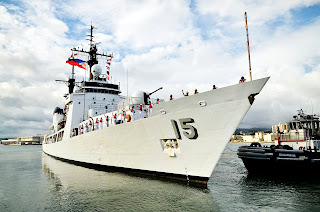By Katlene O. Cacho
The business process outsourcing (BPO) industry will continue to propel Cebu's economy as the province's major economic driver, industry leaders said. The BPO sector is also poised to grow even bigger in the coming years, they said.
"In 2011, BPO companies accounted for 40 percent of positions posted in a jobs listing website. The expansion of BPO operations led to the rise in the demand for office spaces. This year, the region saw property developers putting additional investments in the leasing business," said Cebu Property Ventures Development Corp. (CPVDC) president Francis Monera.
The industry recorded a 20 percent annual growth rate.
CPVDC is the developer of Cebu IT Park. It currently has eight building under construction.
Workforce
Monera said BPO companies are continually drawn to Cebu City with its workforce and healthy fiscal environment. He said Cebu is supported by nine large universities that turn out many workers for IT and BPO companies.
"The BPO industry in Cebu is fast-growing because IT/BPO companies in the US have found a viable destination in Asia where they can relocate after the 2008 global economic crash. The industry will continue to offer a lot of opportunities and will become Cebu's main driver of economic growth," said Cebu Chamber of Commerce and Industry (CCCI) chairman for Information and Communications Technology (ICT) Jerry Rapes.
This year, global outsourcing firm Aegis People Support unveiled its own Aegis Tower Cebu at the Cebu IT Park. The company said their decision to build in Cebu is a sign of their "commitment to and confidence in the country's booming BPO industry and Cebu's workforce."
Monera said they are anticipating an increase of 20 percent in the current 50,000 workforce with the completion of buildings within Cebu Park District.
CPVDC is looking at an estimated 11,000 additional seats with eBlock 2, Skyrise 4 and the Aegis Tower Cebu.
Stream Global, a major outsourcing company, was reported to be hiring between 60 and 70 employees weekly. Convergys, on the other hand, is also expanding with its new office in Cebu, according to Monera.
Some of the firms that expanded in Cebu this year include HP, Fluor Daniels, Dell, Convergys and JP Morgan & Chase.
Non-voice services
"Wide-spread employment is a by-product of these developments with a 35 percent increase in working population for both parks – majority in the BPO industry. (It strengthens) our bid of making Cebu the BPO capital in the Philippines next to Metro Manila," Monera said.
Rapes, meanwhile, said Cebu is not only well-positioned for voice services but also for Knowledge Process Outsourcing (KPO), information technology outsourcing and non-voice services.
He said it is just a matter of preparing Cebu "to get to a higher level," particularly in terms of supplying the industry with skilled, competent and highly qualified workforce.
"There is not always enough people," said Rapes, the president of information technology outsourcing (ITO) company Exist Global.
He said companies now move out from major call center hubs like Metro Manila and open offices in "next wave cities."
Monera, who sits as the chairman of the board for Cebu Educational Development Foundation for Information Technology (Cedf-it) said the private sector, academe and local government have collaborated to improve the skills of potential workers for increased manpower pool via proficiency/certification, retraining and jobs-skills matching programs. The stakeholders are also intensifying programs that support infrastructure and tourism service to strengthen the investment climate in Cebu.
Scalability
Monera emphasized the need for talent scalability, not only in terms of available quantity of the workforce but also in training to match the skills required by companies.
Cedf-it announced last October it will get part of the P500-million stimulus fund committed by the Aquino government to facilitate "near-hire" training programs of IT-BPO companies. It said about P5 million worth of scholarships from the Technical Education and Skills Development Authority (Tesda) will be used to conduct "near-hire" trainings for 1,000 prospective IT-BPO employees here.
Monera also cited Cebu's "big opportunity" in higher level services or KPO. He said although, manpower requirement for this category may not be as high as voice-related jobs, these are high-value services that mean higher average compensation for the Filipino talent.
While there is continued growth ahead in the BPO industry, Rapes said "being complacent" may threaten BPOs' rosy outlook for 2012.
"We need to create more people for the industry rather than compete with each other. We need to produce more skilled workforce for a bigger ecosystem," he said.
Rapes also announced that the outsourcing industry will soon start the second phase of the Cebu IT/BPO roadmap so it could further maximize the potential of IT/BPO services.
What to do
He said the study will "drill down what Cebu needs to get to higher level."
"We have to know where we are going and what to do next now that we know we have the capabilities to do more KPO," Rapes said.
He said that while waiting for the second phase of the study, entrepreneurs should start looking at opportunities in offering KPO services.
He said India has higher revenues than the Philippines because they do difficult services. "But if the Philippines will capitalize on its KPO potential and do its homework, the IT/BPO revenues will grow eventually," Rapes said.
The Business Process Association of the Philippines targets to grow the industry by $25 billion in revenues in 2016 and increase IT/BPO employment to more than one million.
A bill seeking to create a Department of ICT was also filed as a support to the growing industry.
Published in the Sun.Star Cebu newspaper on December 30, 2011.















